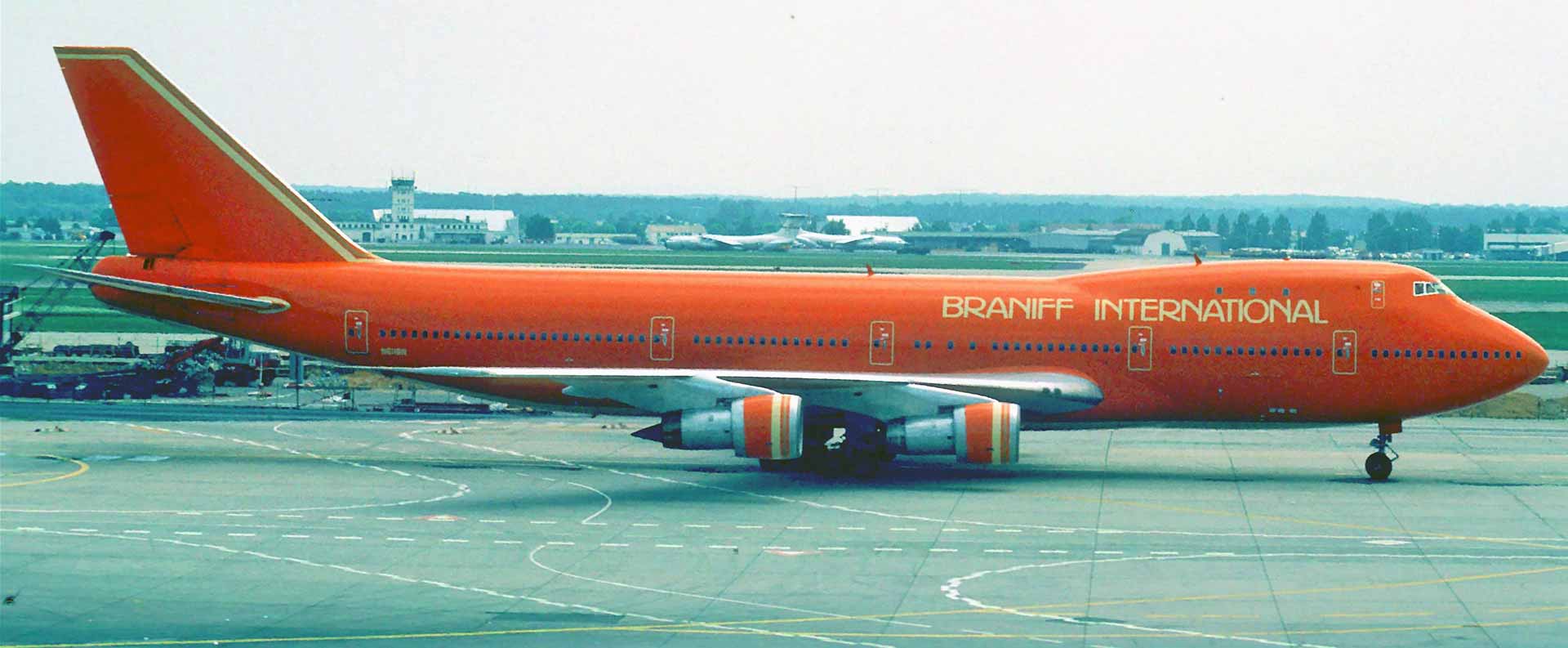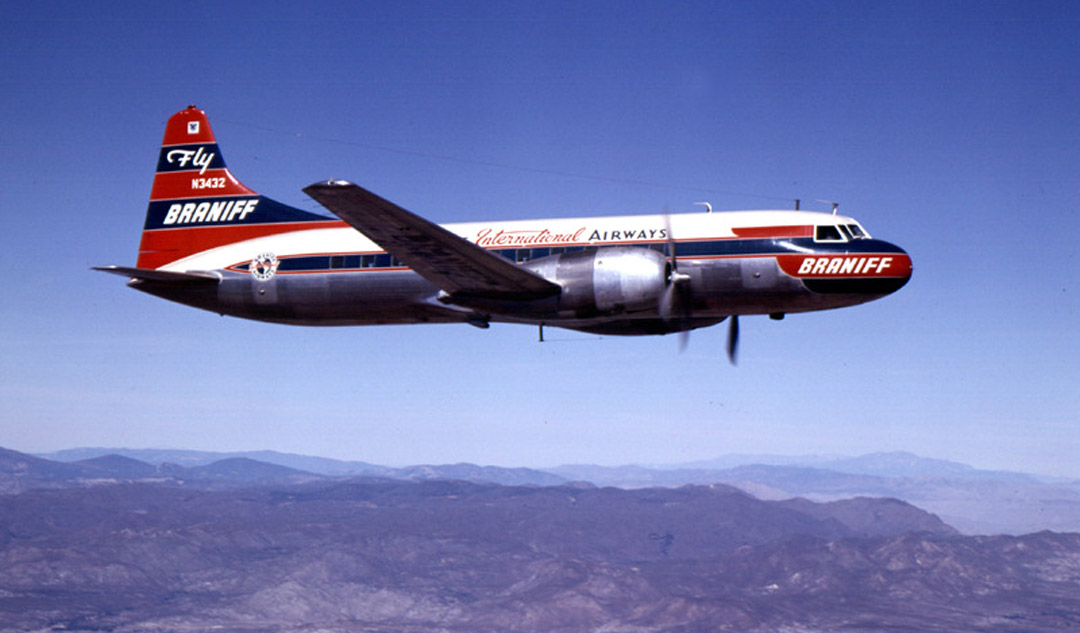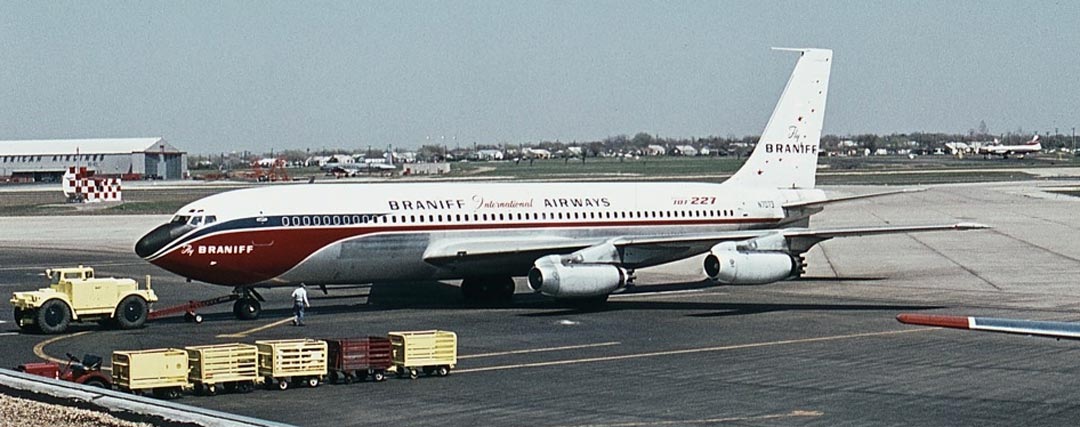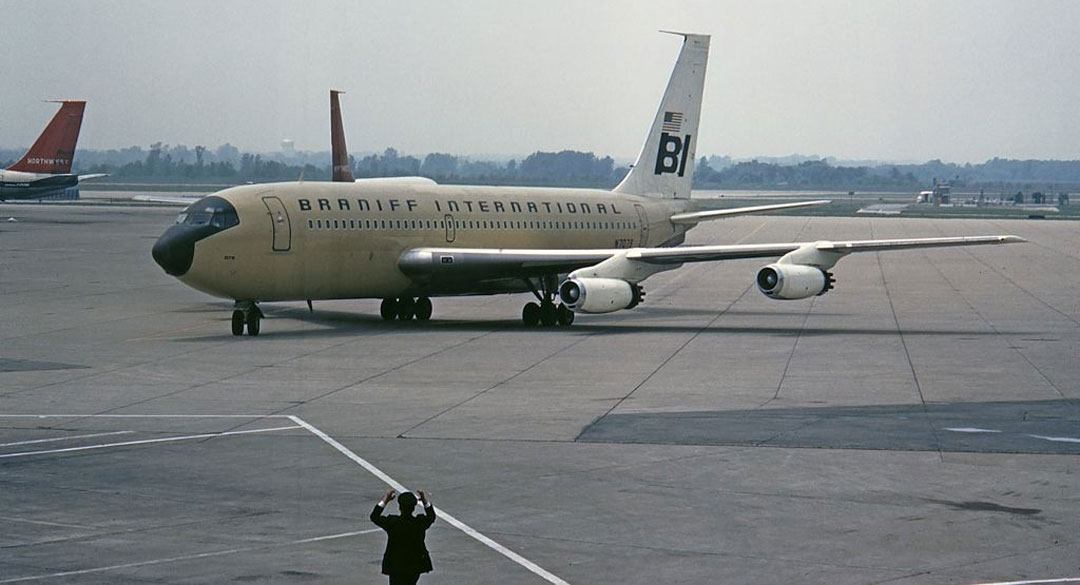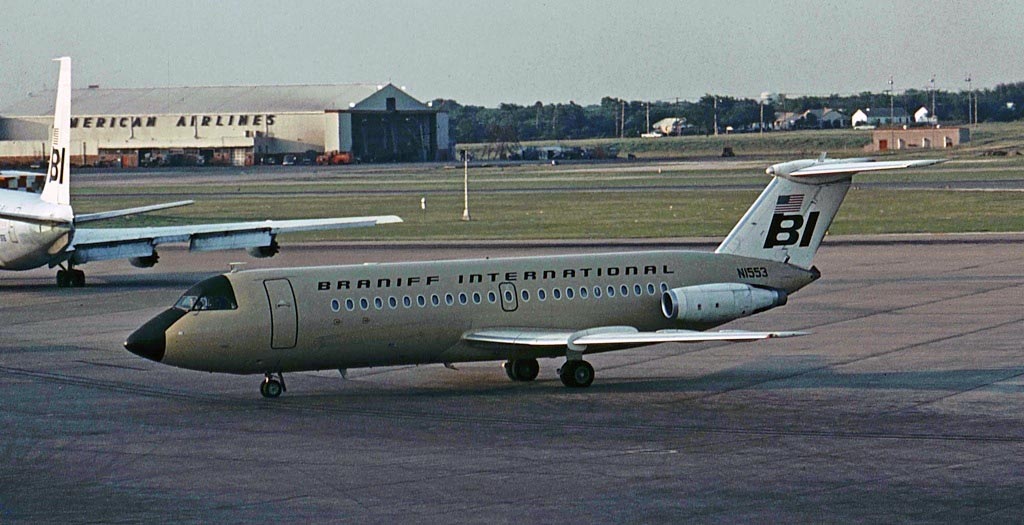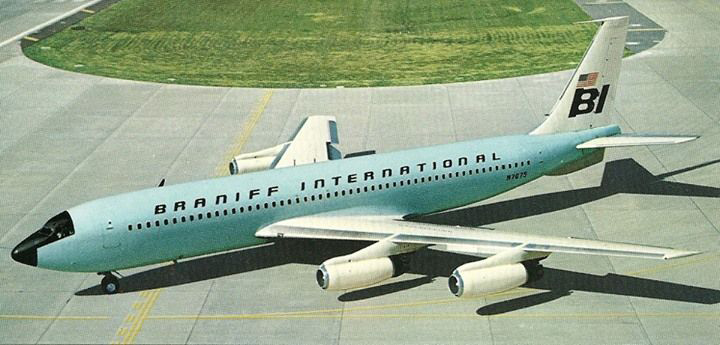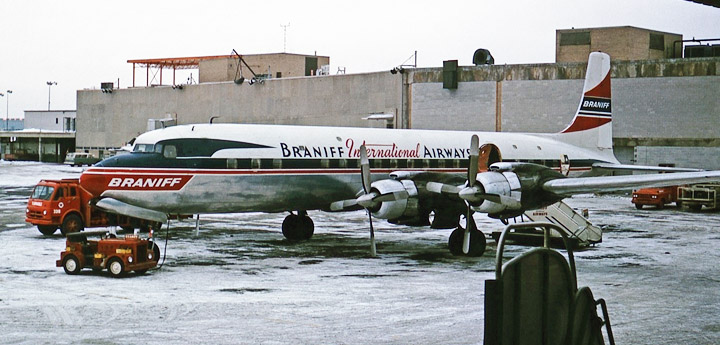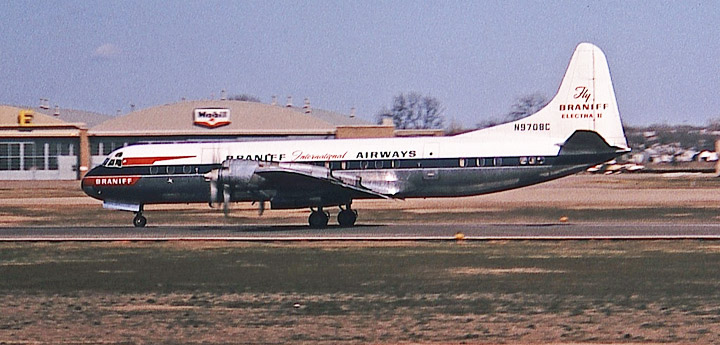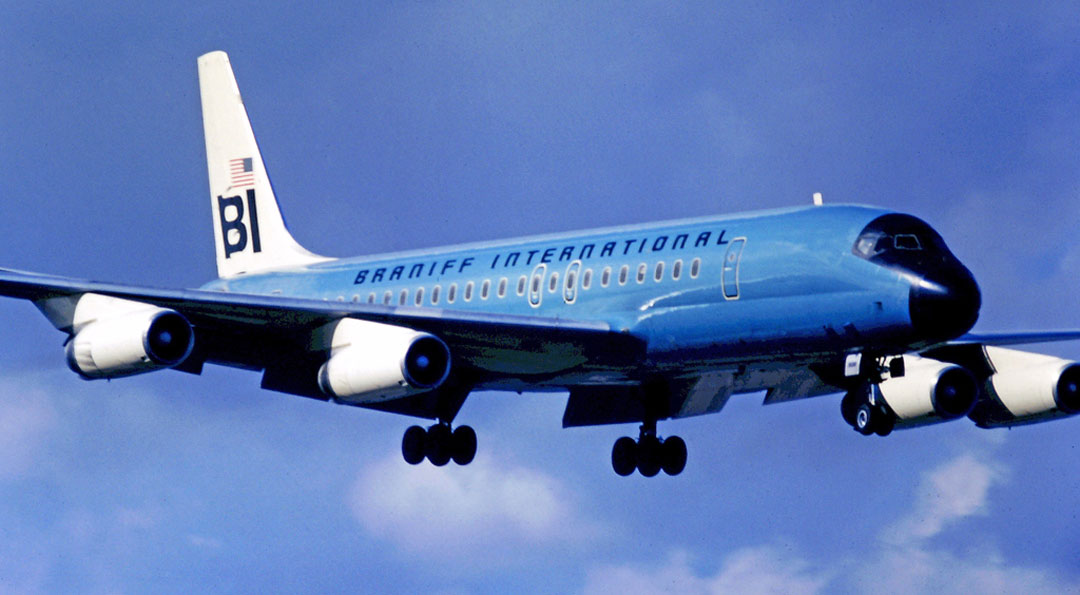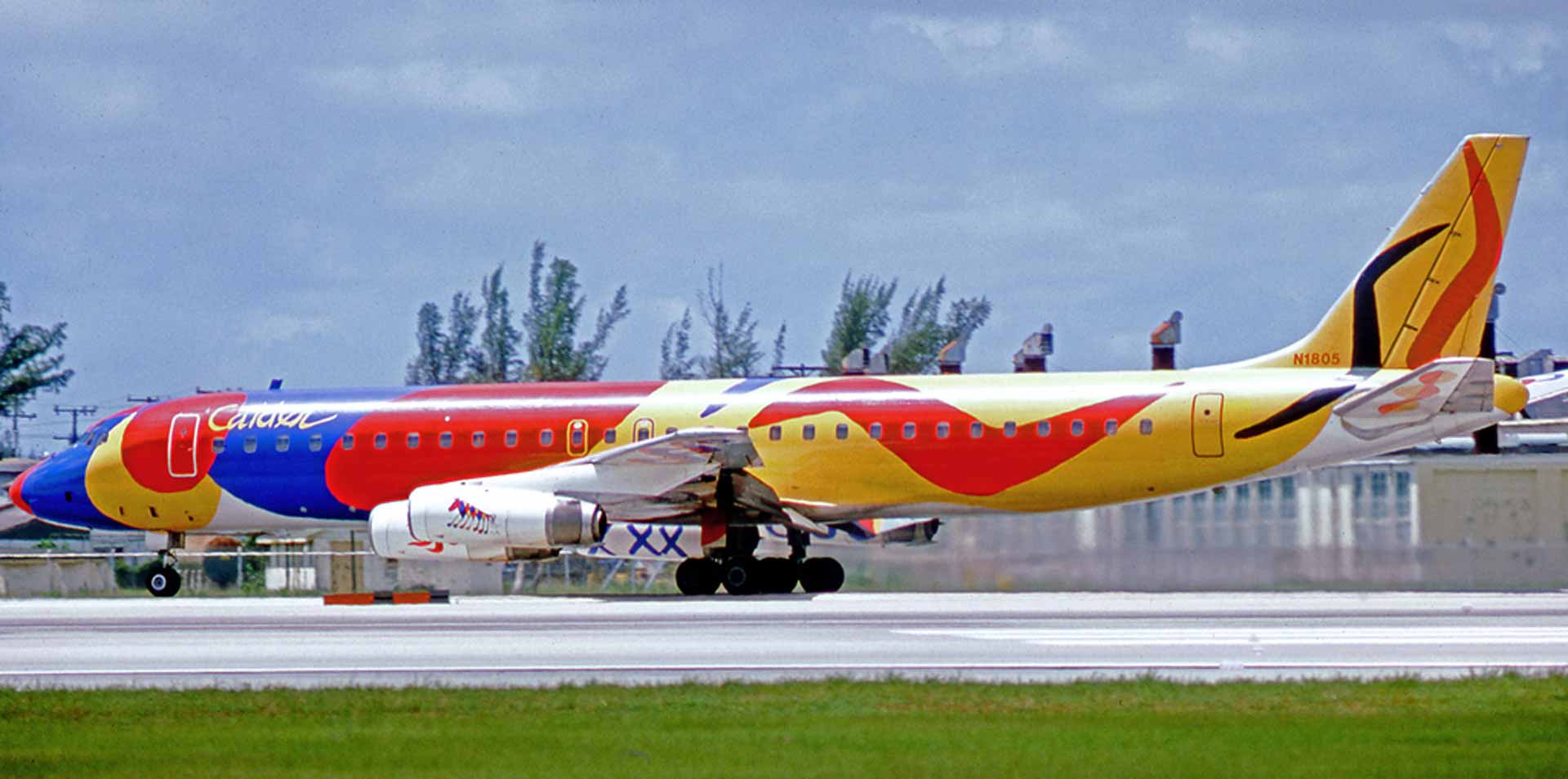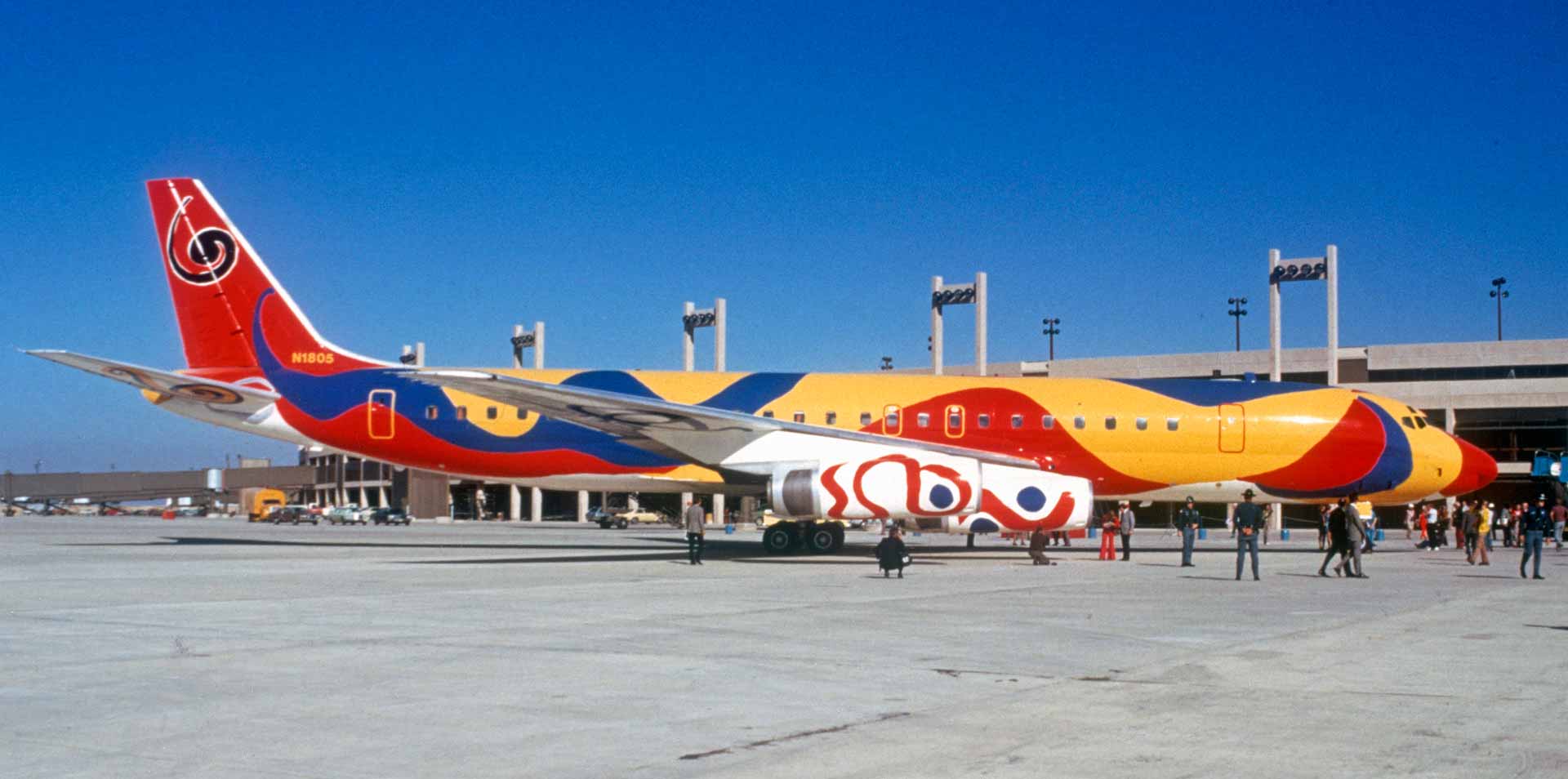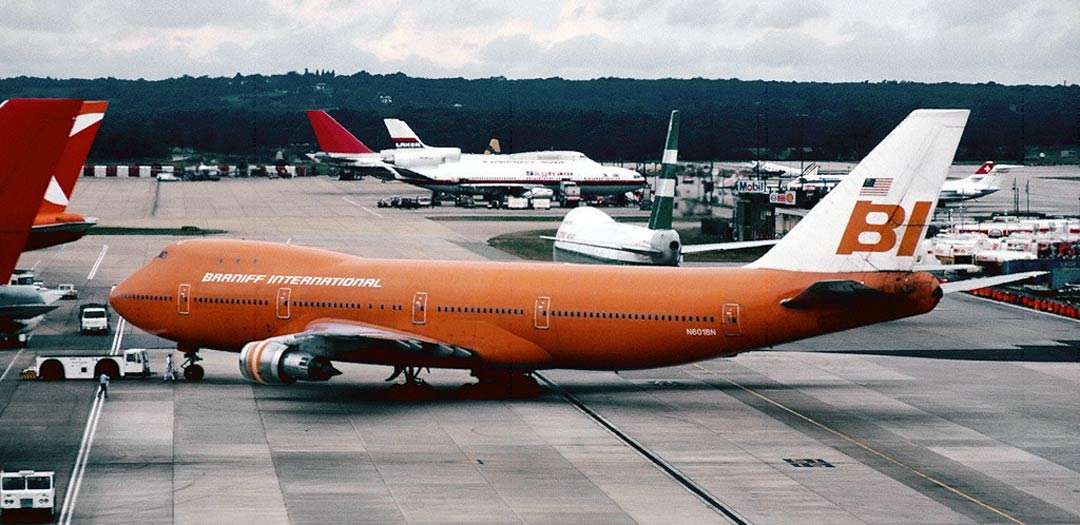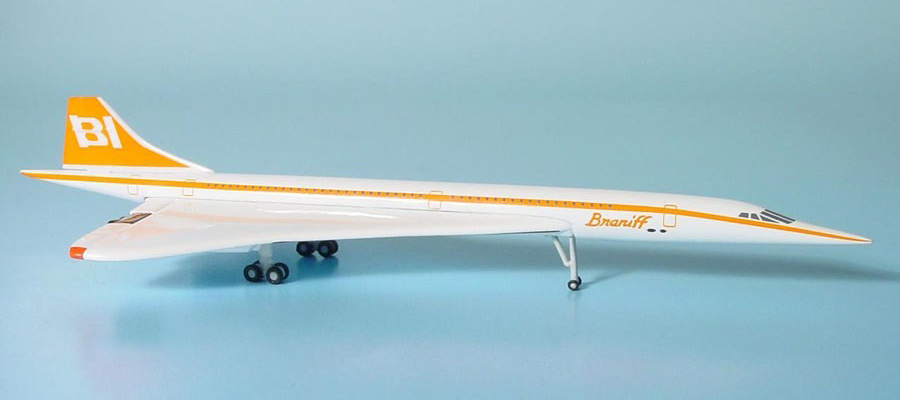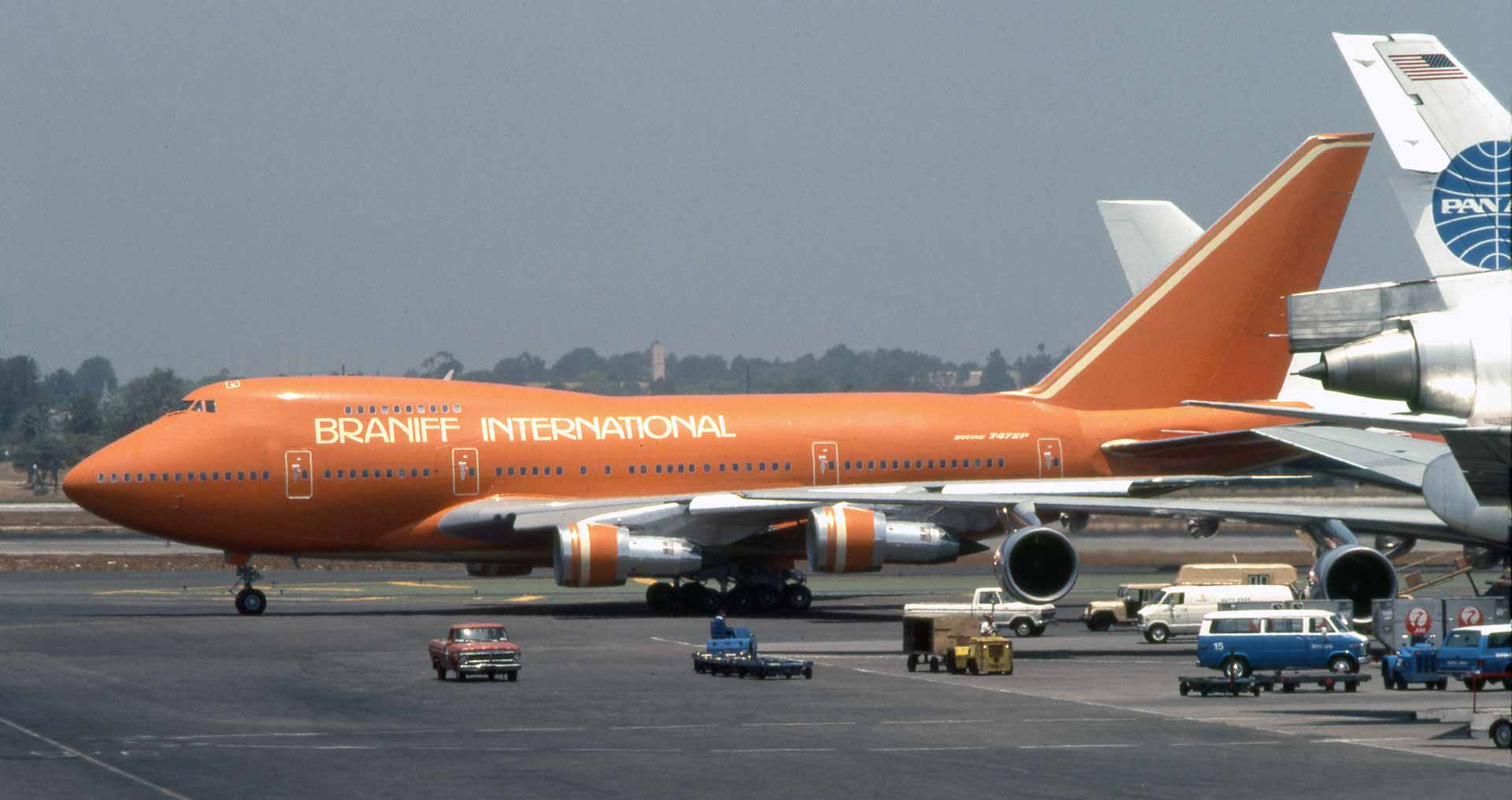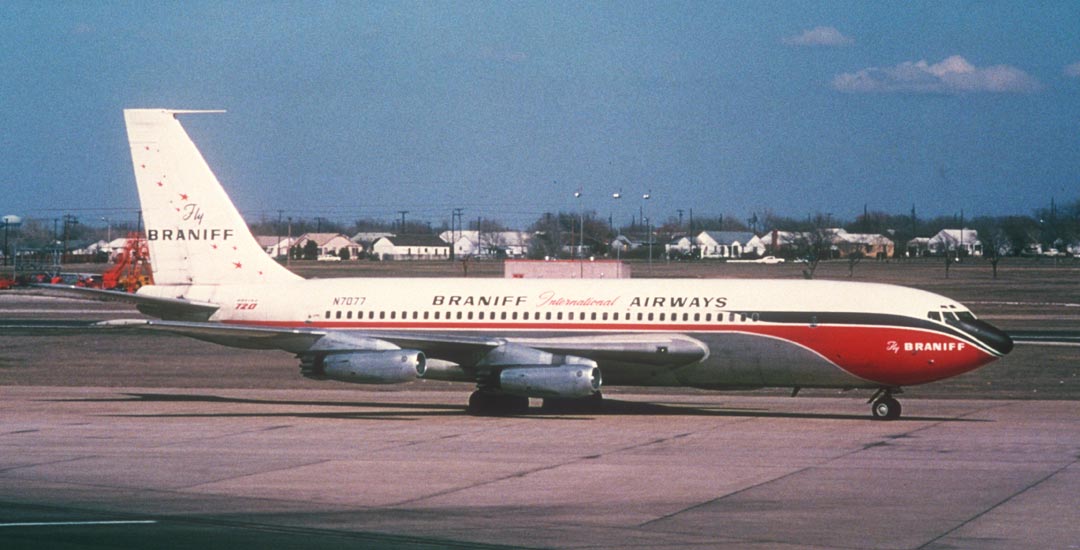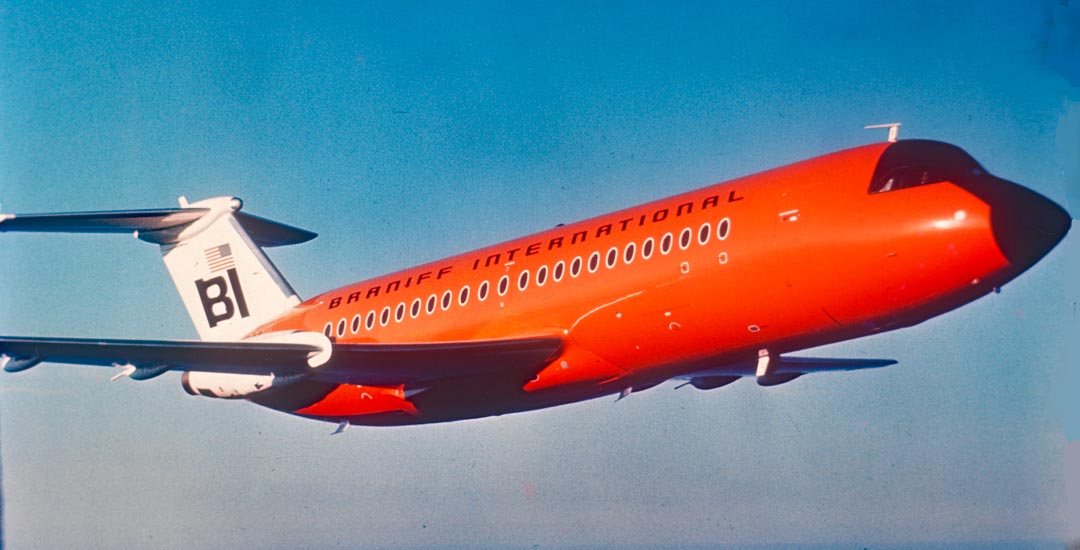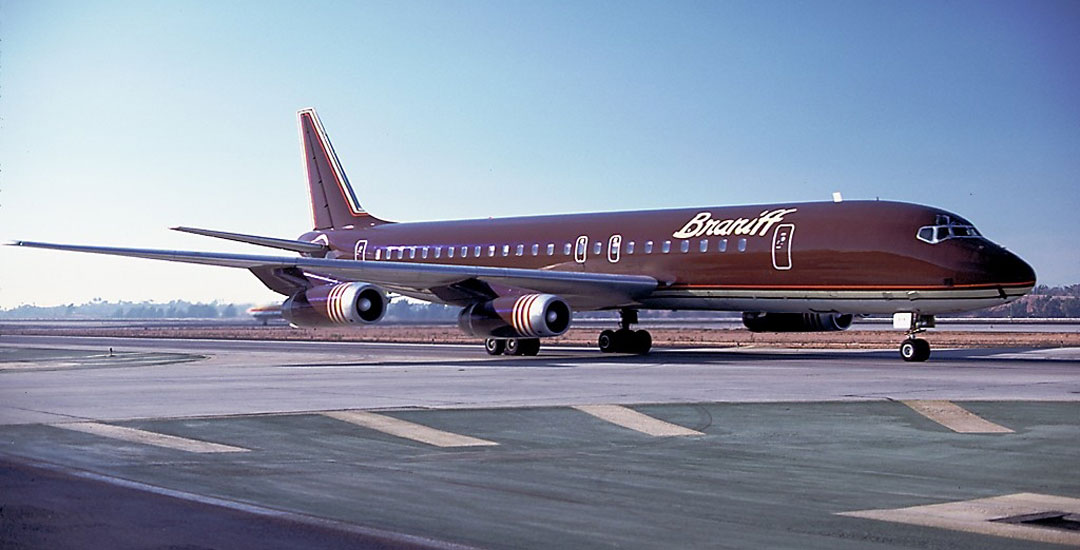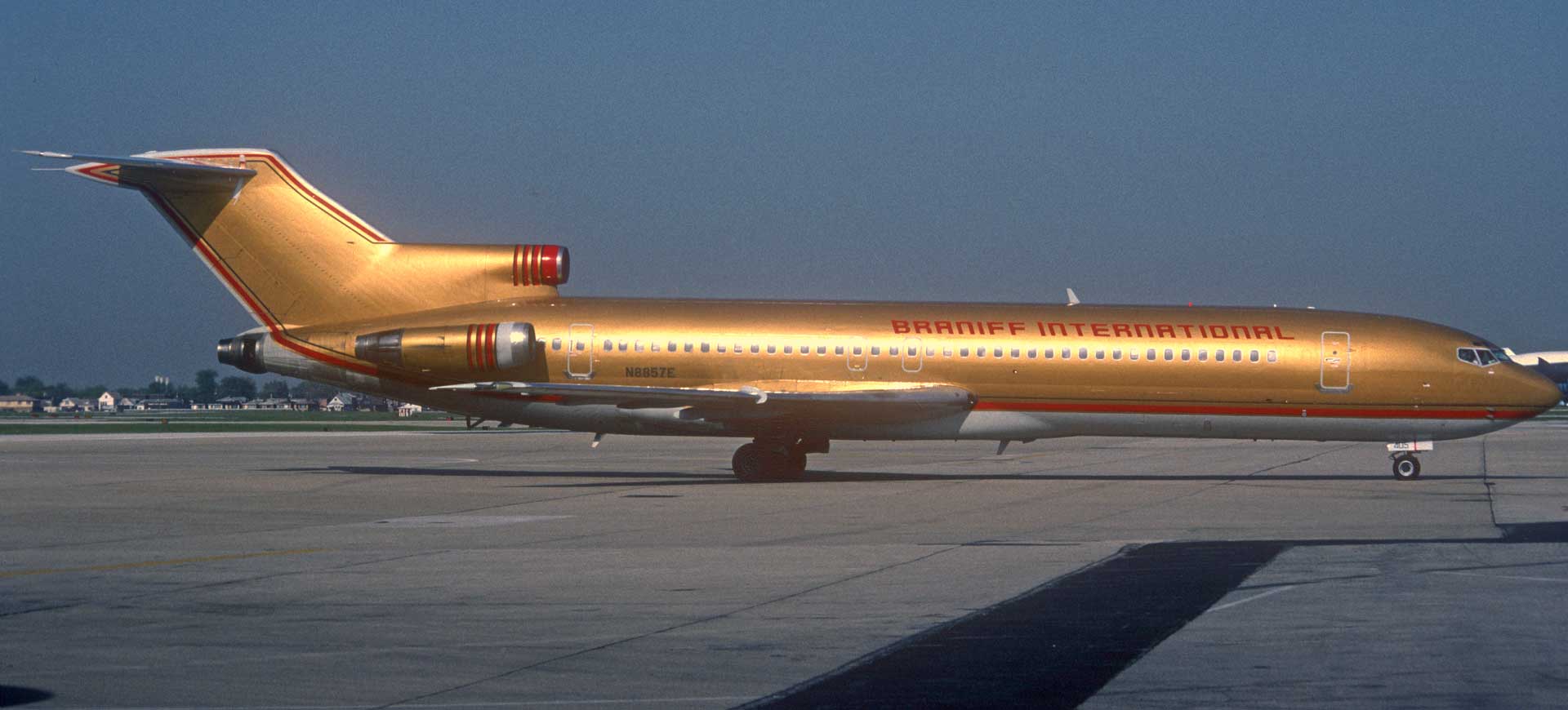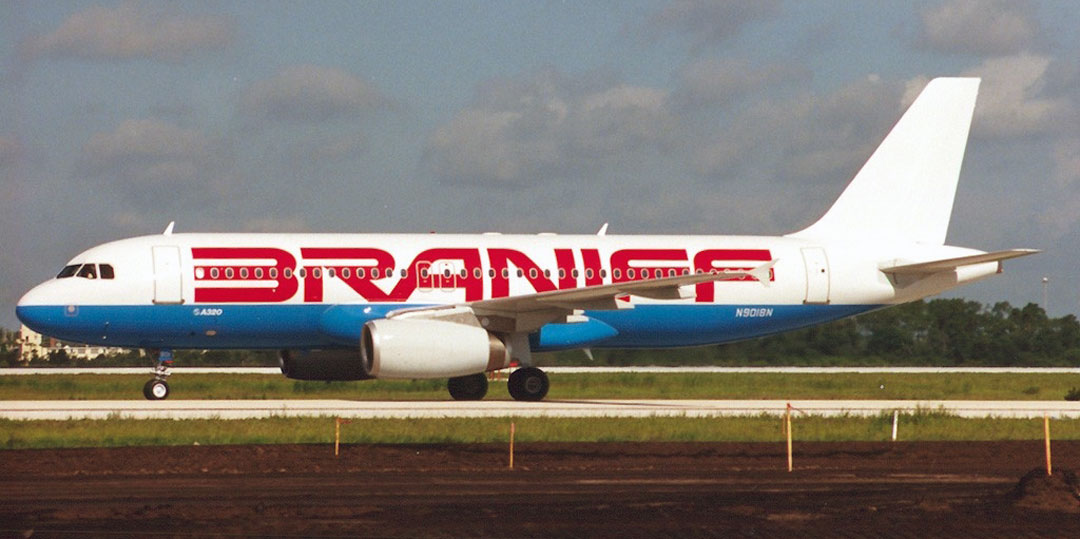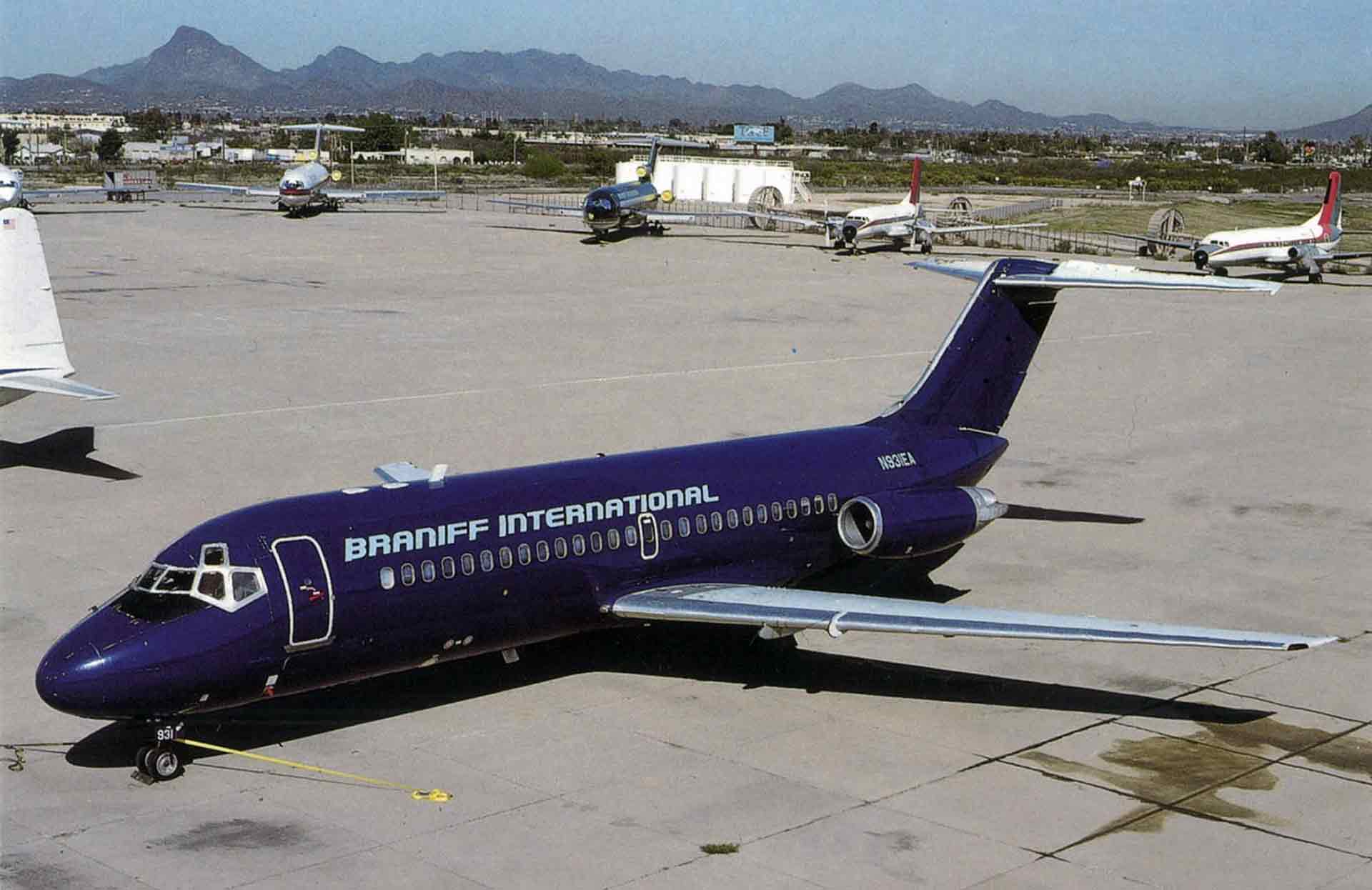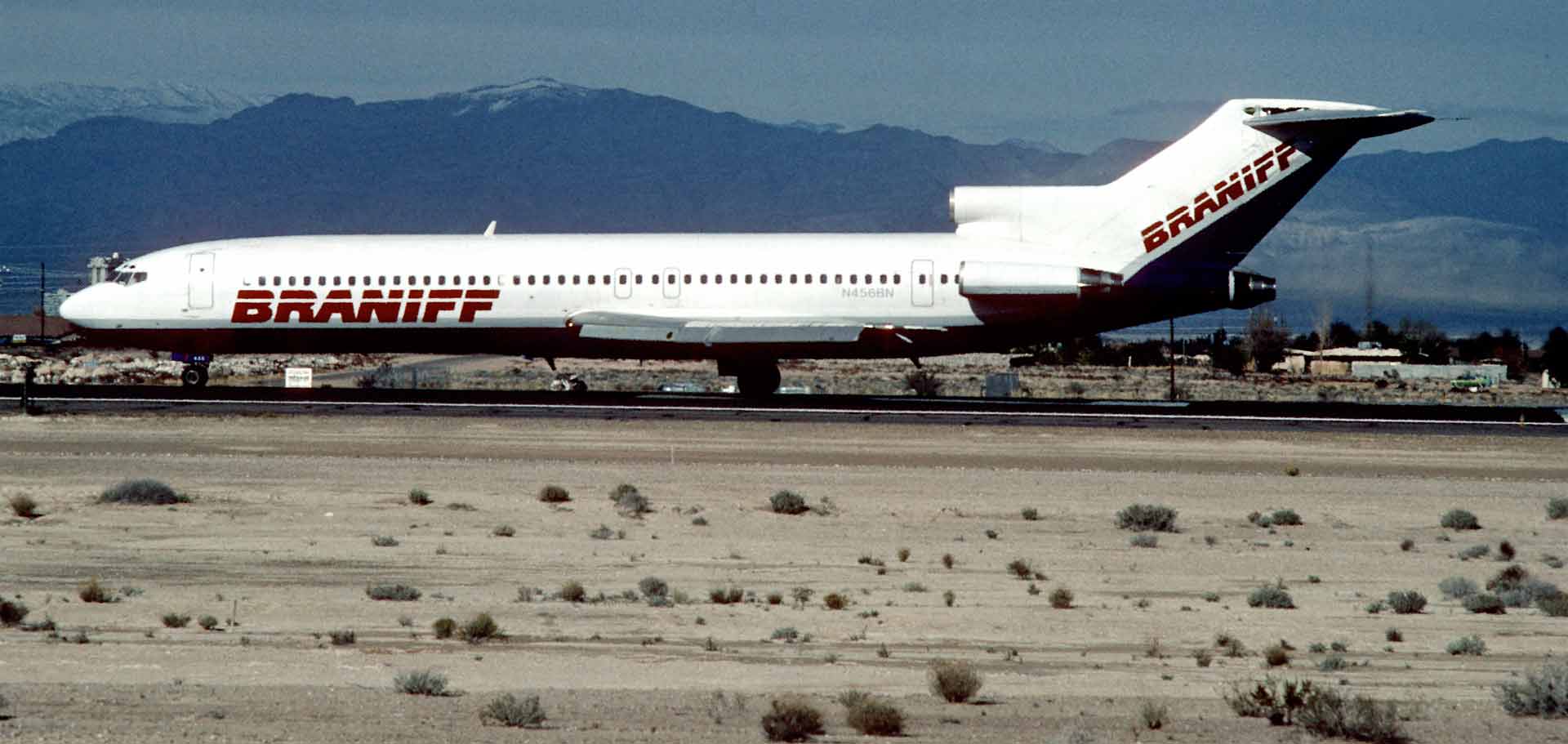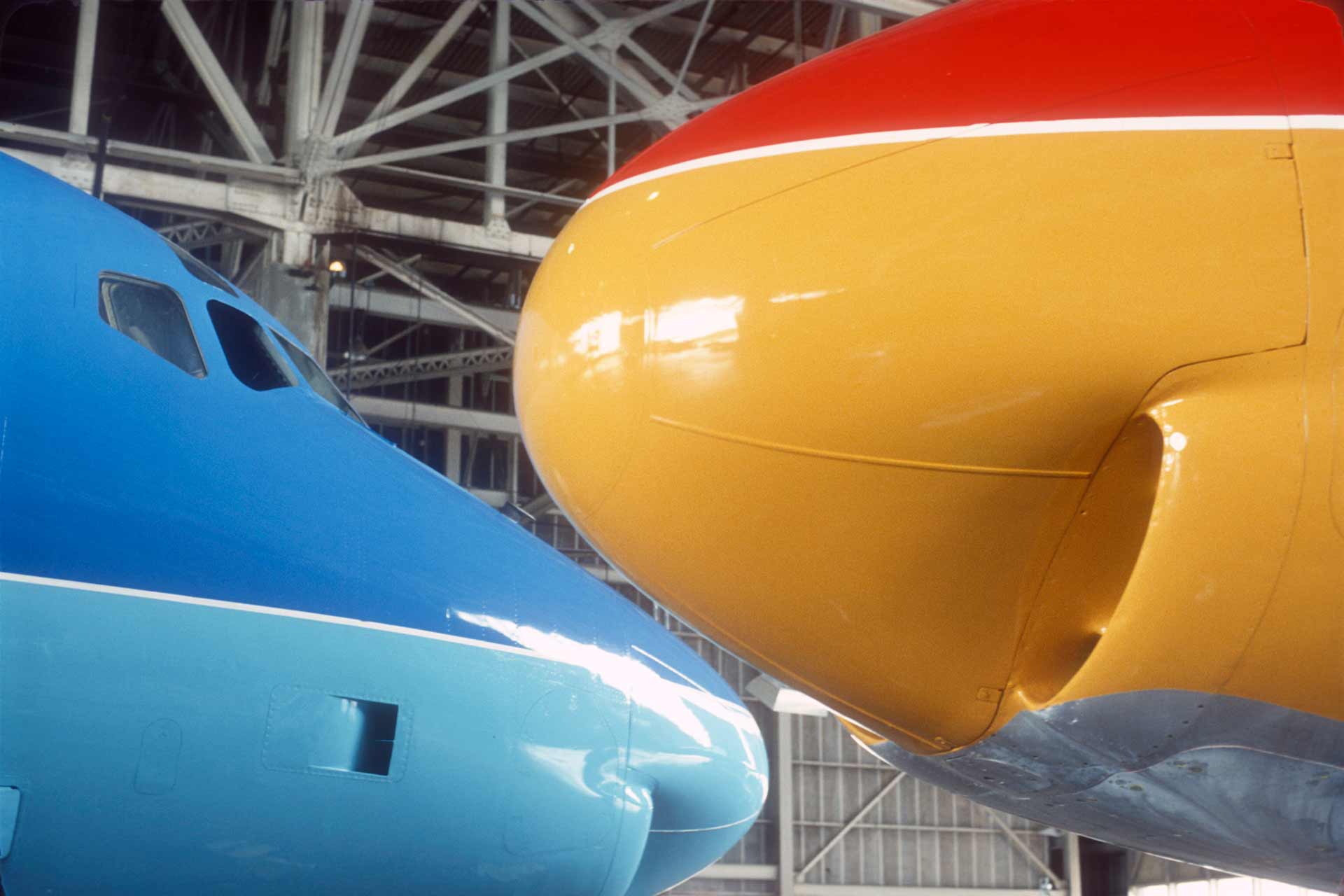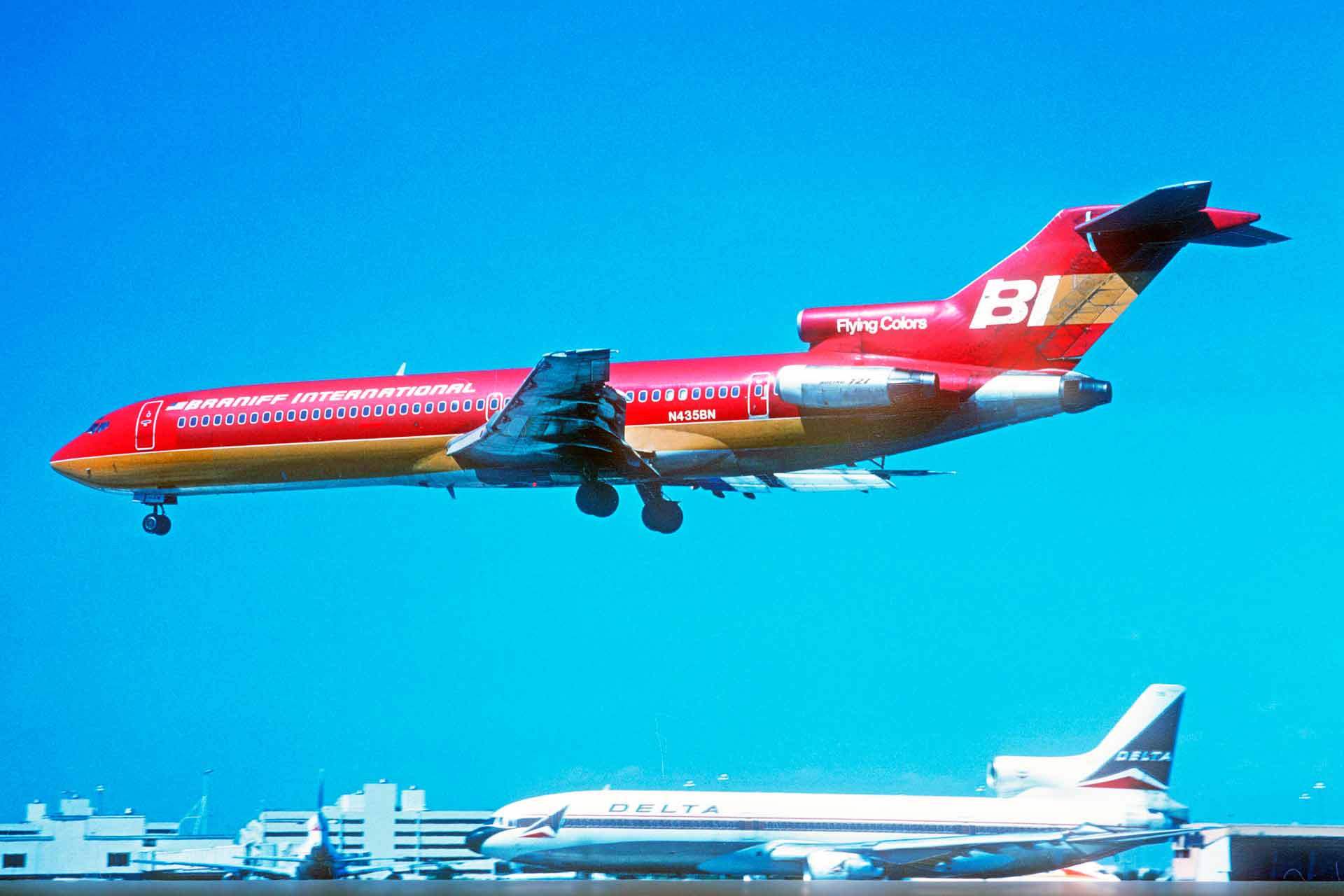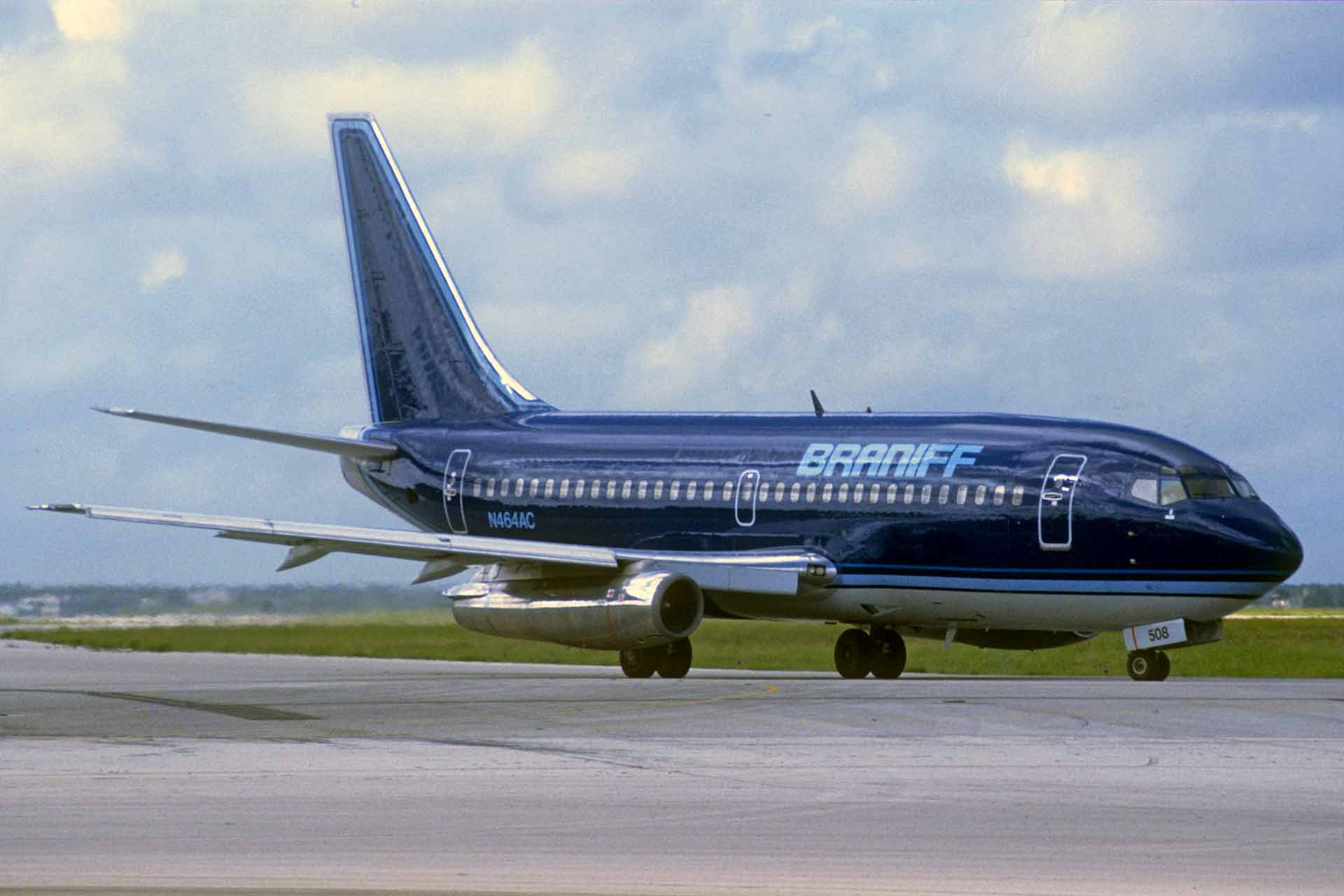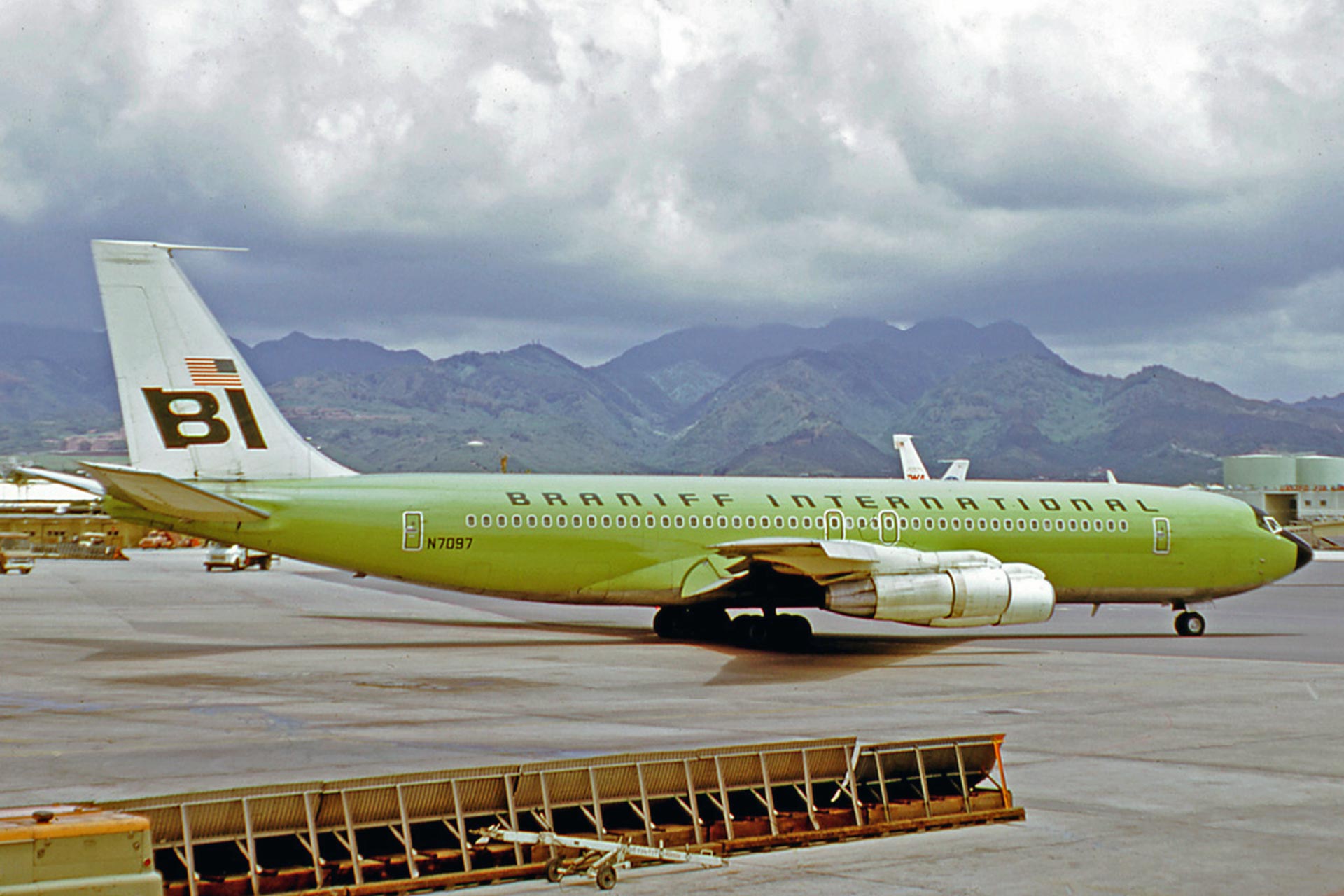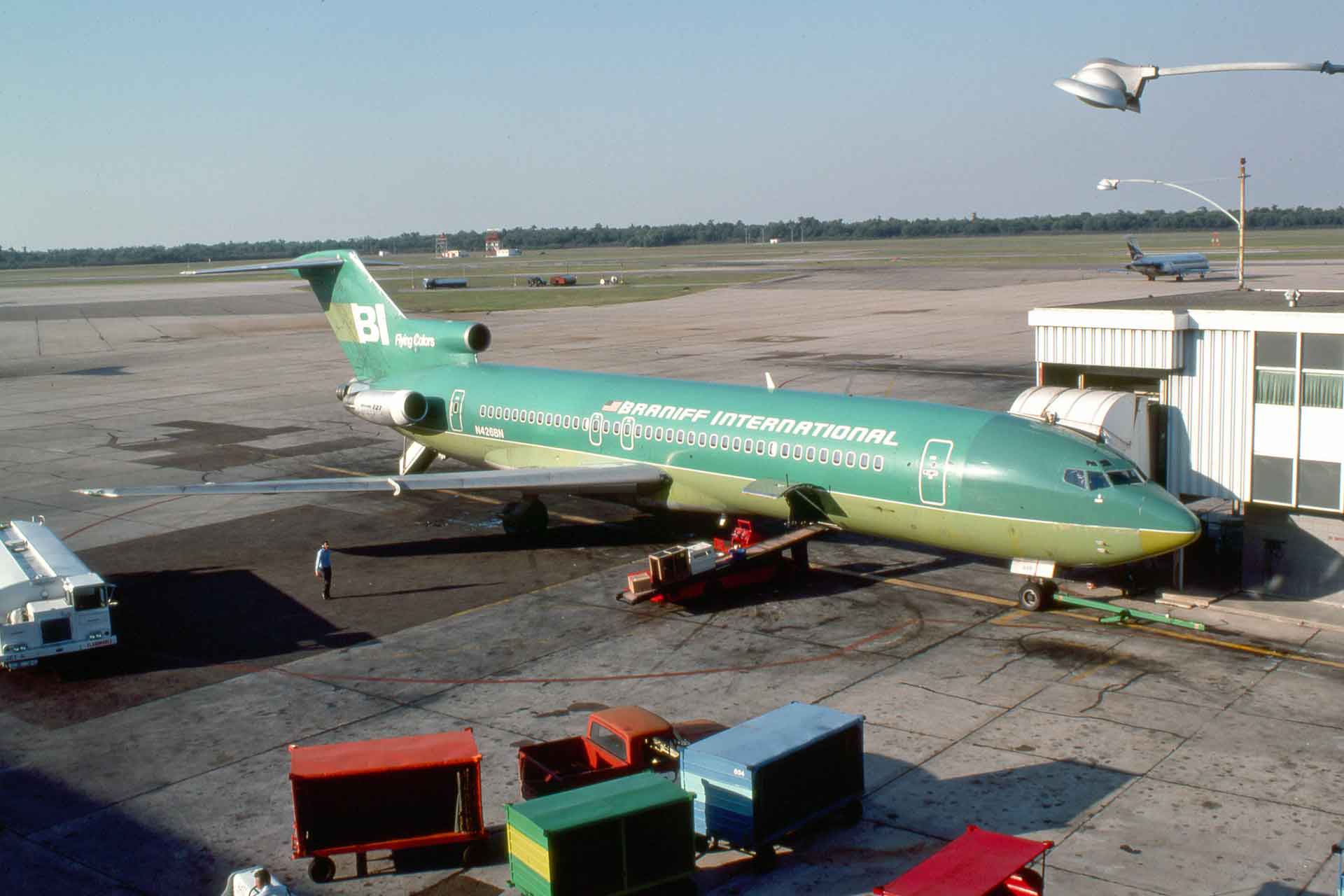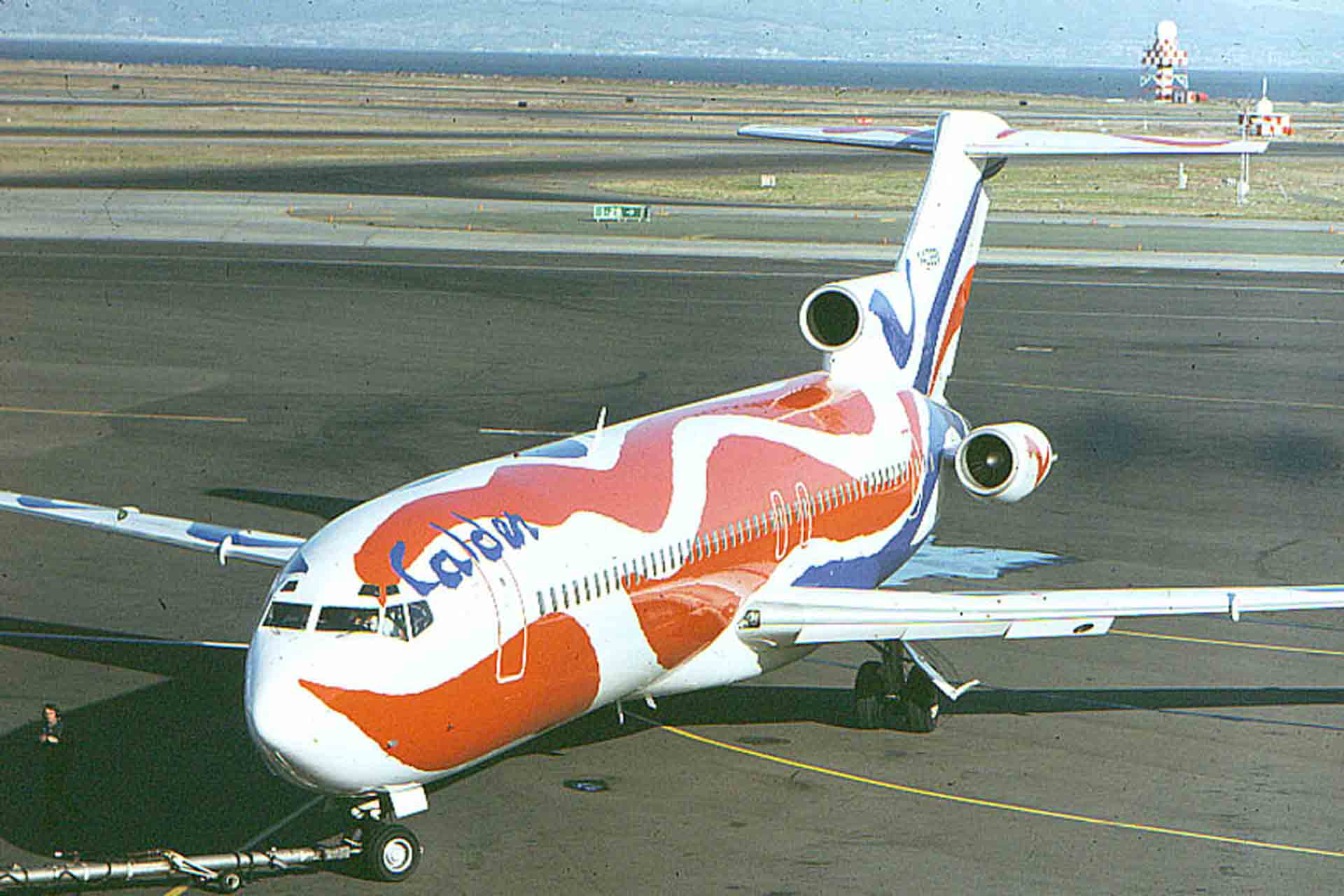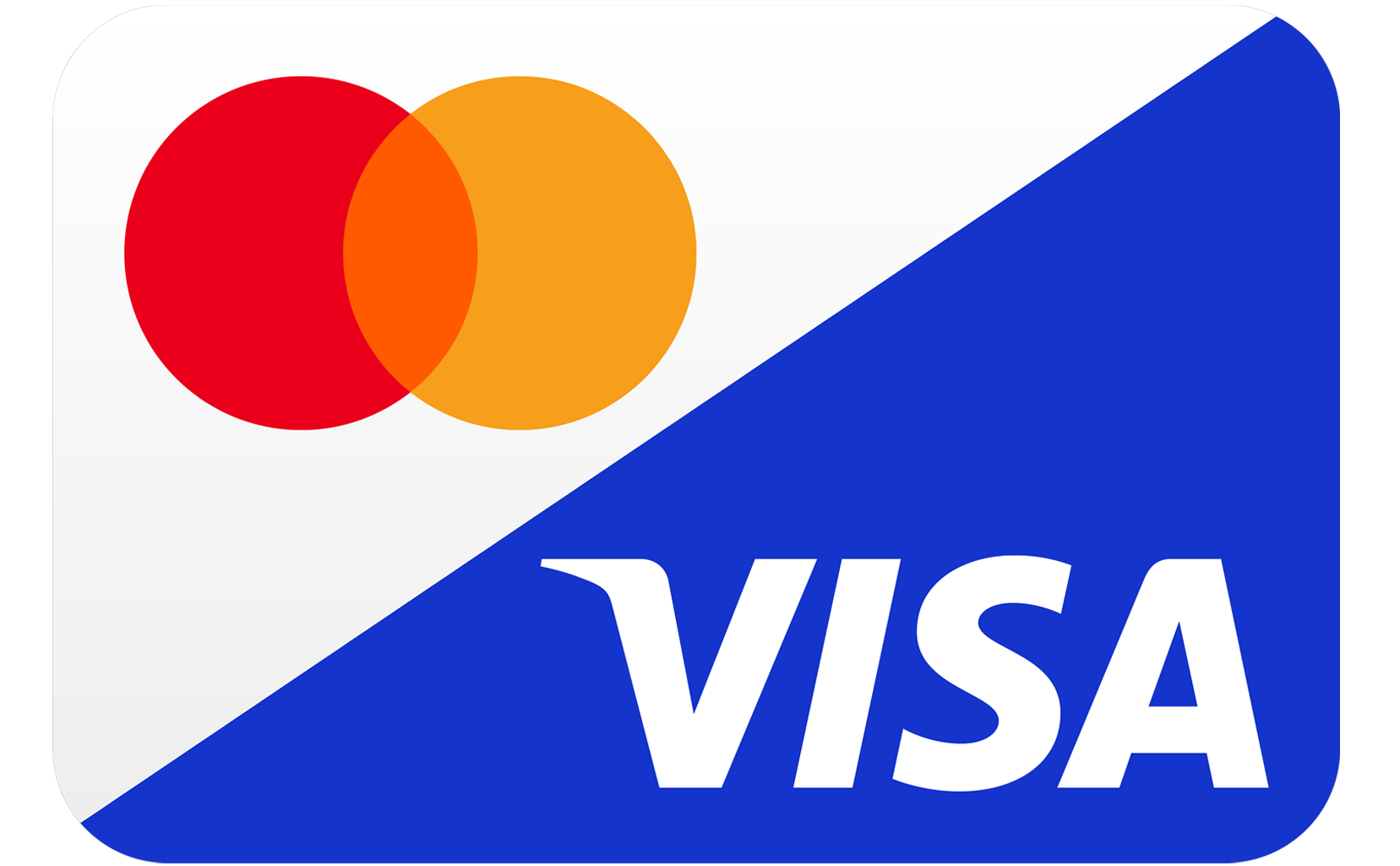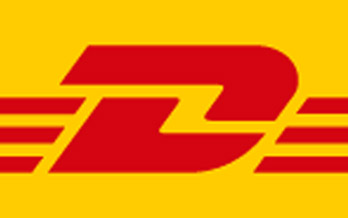“The End of the Plain Plane”
With a good 29 million inhabitants, Texas is one of the largest and economically strongest states in the USA. In addition to the economic centers of Houston, San Antonio, and Dallas, the capital of Austin, with a population of nearly 800,000, is the political center. It is therefore not surprising that two of the four largest airlines in the USA, American Airlines and Southwest Airlines, are based in Dallas. In the era after World War II, it was American and Houston-based Continental that dominated the aviation scene in Texas.
That being said, Dallas was also home to another large and popular airline. Back in 1928, the brothers Paul and Tom Braniff had founded Braniff Air Lines in Oklahoma. Restructured and relocated to Dallas in 1941, Braniff grew into a strong operator with a focus on the southern states of the USA as well as Latin America. The Braniff family itself was not very fortunate; the two brothers both died in 1954, and their widows and even the grandchildren lived only briefly.
Convair “liners” were the world’s most popular short-haul aircraft in the 1950s, thanks to pressurized cabins. This is a CV-340, which also found its way into the Herpa Collection in 2019 as a model in the 1/200 scale. Photo: SDAS Museum
The dawn of the jet age
So it was that the family business came under new management, and the airline was led into the jet age by Charles Beard in 1959, which began quite unusually with four Boeing 707-200s. For one thing, the -200 was an only marginally improved “Hot and High” special series for serving high-altitude airports, such as Mexico City, and for another, Braniff was the only customer with the number 27, which meant that all of the airline’s Boeings henceforth featured a 27 in the serial number. Braniff kept the four rare 707-227s in service until 1971. They were joined by a total of 22 more Boeing 720s and 707s from 1961 onward.
But Braniff had the problem of being an airline that was largely unknown around the world. Even in the USA, it played virtually no role outside its local sphere of action. This was quite a handicap, because Braniff thus lacked an aftermarket, which until then had essentially been covered by Pan American, which operated from Miami. Pan American’s boss, the legendary Juan Trippe, and his two airlines Pan Am and Panagra did everything they could to make life difficult for Braniff in Latin America. This could not continue. Edward Acker, the chief financial officer of the insurance company and major shareholder Great America Corporation, judged the airline to be underemployed and poorly managed. He became the new chairman of Braniff’s board of directors, and his principal put a highly successful manager in the person of former Continental chief Harding Lawrence at his side as the new CEO.
The Boeing 707-200 was a one-off; only Braniff ordered five of the series, which was only marginally improved over the original 707. Photo: John Proctor, GNU
Heading for success with a revolutionary livery
His task was not without ambition. Braniff was to become a modern, unorthodox, crowd-pleasing airline poised for growth. The first thing Lawrence did was hire his future wife, Mary Wells, in order to brush up Braniff’s image. She did so in a sustained way, hiring proven, but deliberately non-industry designers such as Mexican architect Alexander Girard, Italian fashion designer Emilio Pucci, and American shoe designer Beth Levine.
In 1967, the Boeing 720 was one of the first airplanes with which Braniff heralded “The End of the Plain Plane”. The Flying Colors, quickly dubbed the Jelly Bean, shocked the industry, but made Braniff instantly famous worldwide. Photo: John Proctor, GNUD
Mary Wells and her three men hit the ground running, and it took them only a few months to literally turn Braniff’s image upside down. The motto was “The End of the Plain Plane”. What this meant was presented to the public in 1967. Although in a uniform design on a white tailplane and newly designed BI logo, all aircraft came in 15 different colors inside and especially outside.
Starting in 1965, Braniff was the first export customer to take delivery of the British BAC 1-11. The small jet was to replace the remaining Convairs, but the Texans took delivery of only 14 aircraft, retiring them after only seven years. Photo: John Proctor, GNU
[1] Boing 707-227 1967.
[2] Douglas DC-7C Seven Seas, Braniff International Airways. Photo: John-Proctor, GNU
[3] Lockheed L-188 Electra. Photo: John Proctor, GNU
The number one to South America
In 1967, Braniff took over Pan American Grace Airways, or Panagra for short, from New York, which was then its arch competitor, and thus became the most important US airline in South America. This initially meant that even then, older DC-8-30s were added to the fleet, but five ordered DC-8-62s with their enormous range of a good 12,000 kilometers were important. After Braniff took over the order, the new jets were delivered in the spectacular colors and deployed exclusively to South America. A total of ten of these “Super Sixties” were operated until the end of the airline in 1982.
With the takeover of Panagra, a total of ten McDonnell Douglas DC-8 “Super-62s” also joined the fleet from 1967. The thoroughly modernized “Super Sixties” were clearly superior in every respect to the flagship 707 of the time. Photo: RuthAS, CC
In the process, another element of style was added to the already artistic series paint scheme. In December 1972, at the behest of its advertising agency, Braniff commissioned designer Alexander Calder to create a design specifically for its South American operations. He took a DC-8-62 and presented a very colorful design on it in Miami in 1975, called “Flying Colors of South America”.
The Calder Colors
In November of the same year, Calder was commissioned to design three more Boeing 727-200s with the “Flying Colors”. However, only one aircraft entered service with the registration N408BN as “Flying Colors of the United States”, named by the then “First Lady” Betty Ford. The other two projected “Flying Colors of Mexico” and “Salute to Mexico” were not realized because Calder fell seriously ill and died in November 1976. The “Calder Colors” also marked the end of the Plain Plane campaign with its many PR venues, with which Braniff had placed itself in the front line among US carriers.
In 1972, although the Plain Plane campaign ended, Braniff made another PR push, first commissioning American fashion designer Alexander Calder to design a DC-8.
[1] Photo: RuthAS, CC
[2] Photo: Luftfahrtarchiv
Big Orange
Among these was the most spectacular act, namely the introduction of the Boeing 747. It had taken Boeing just a single year to sell its hundredth “Jumbo Jet” in December 1970, i.e. a single 747-127 to Braniff, which was to serve the Dallas/Ft. Worth to Honolulu, Hawaii route exclusively. In doing so, Braniff was taking a huge flight operational and, above all, economic risk, especially since the -100 series of 747s had not necessarily stood out for its reliability.
In 1971, Braniff took delivery of this single Boeing 747-127, already the one hundredth “Jumbo Jet” built by Boeing. Initially deployed exclusively to Hawaii, it began to appear in Europe in 1979 as part of deregulation. Photo: Tim Rees, GNU
But the aircraft arrived on time and entered scheduled service on January 15, 1971, with the registration N601BN. Painted in bright orange, it was immediately nicknamed “The Great Pumpkin”. Braniff scored a major PR success, and the 747 was given other names, such as “747 Braniff Place” and “The Most Exclusive Address in the Sky”. A daily utilization of 15 hours with a 99-percent reliability rate was the remarkable record of this one-of-a-kind aircraft during the period of this exclusive operation. Braniff’s uniform orange 747s, however, became best known as the “Big Oranges”.
The supersonic adventure
The next, literal PR bang came in 1976 when Braniff signed two interchange agreements with British Airways and Air France for flights with the supersonic jet Concorde between London and Paris, respectively, and Dallas with a stopover in Washington D.C. While the Europeans performed the transatlantic supersonic flights, the connecting service to and from Dallas was performed under Braniff’s direction in subsonic flight, because supersonic flights over the American mainland were not allowed due to noise emission. Nevertheless, Braniff achieved a tremendous PR success that finally put the airline in the international headlines. Herpa also discovered the SST for collectors and fans, and in 2004, a model with item number 507059 in the 1/500 scale was released by Herpa. Just below the sound barrier, the Concorde raced across the USA at Mach 0.95, adding just 20 minutes of flight time compared to a Boeing 727 on the route between Washington and Dallas at the cost of a miserable economic and environmental impact. In 1980, Braniff resigned and discontinued the program; even then, the costs threatened to get Braniff into serious trouble.
Braniff pulled off a decidedly spectacular PR stunt in 1979 when it joined forces with British Airways and Air France to extend their routes to Washington to Dallas in its own name. The adventurous costs caused the joint venture to end after one year. Photo: Herpa
A new image
In the meantime, the airline was also rebuilding its image in other ways. In 1976, it commissioned Chicago-based fashion agency Halston to create a modernized image, and the result was a much more elegant design using the previous colors. Halston launched the “Elegance Campaign” in mid-1977, when newly elected President Jimmy Carter began to make aviation history with the Deregulation Act of 1978, revolutionizing not only US air travel but the rest of the world as well.
In 1976, Braniff introduced the “Elegance Campaign”, based on the “Flying Colors” of 1965, and streamlined the design with a new, more understated outfit. The three Boeing 747SPs, which were mainly deployed to the Far East, were the first to be redesigned. Photo: Clipper Arctic, CC
Braniff jumped on this bandwagon extremely aggressively, opening new routes worldwide, especially to Europe. In 1978, Braniff bought Lufthansa’s first 747-130 with the former registration D-ABYA from Lufthansa. Within just one year, two more -100s followed, then four -200s, and finally three 747SPs. These remained the only widebody jets, and they were used on the massively expanded European and East Asian network. This was not the first time that management had succumbed to the temptation of favorable acquisition prices. Indeed, maintaining the jumbo fleet, which suddenly comprised eleven aircraft, became a hair-raising financial chore that was bound to lead to collapse at some point.
[1] Braniff International Boeing 720-027 N7077. Photo: Luftfahrtarchiv
[2] Braniff red-orange Jelly Bean BAC 1-11. Photo: Luftfahrtarchiv
[3] McDonnell-Douglas DC 8-62. Photo: Ted-Quakenbush, GNU
The corporate stall
The end came even sooner than even the professionals suspected. In January 1981, the board of directors fired Harding Lawrence and replaced him with John Casey, the later head of Pan Am, who thus led two prominent airlines into bankruptcy. Casey started the run to keep Braniff afloat in the increasingly deregulated market. No sooner had the effort begun to bear modest fruit than an air traffic controllers’ strike inflicted significant damage on the airline. In late 1981, Casey was ousted as president, and the board of directors installed a new president, Howard Putnam of Southwest Airlines, who promptly introduced another new fare system, this time greatly simplified. It didn’t help, Braniff now had to sell off the “silverware”, i.e. aircraft, traffic rights, and slots. Although Putnam was able to secure liquidity with the banks until October 1982 and avert a threatened pilots’ strike, he took the bitter road to bankruptcy on May 12. Braniff ceased flight operations that same day.
Things were brightening up for Braniff, as this golden interpretation of the new design on one of the 727-200 fleet, which had now grown to a proud 62, shows. Too brightly, as quickly became apparent. Photo: Aviation Archive Matthias Winkler
Braniff 2.0 – a hotel group tries to save the situation
The years that followed constituted a long struggle for survival, including two attempts to revive the airline. The first attempt was made in 1983 by the Hyatt hotel group, which, among other things, took over outstanding contracts from Pan Am for 50 Airbus A320s and wanted to build up a low-cost airline as Braniff Inc. In addition to 34 Boeing 727-200s and 18 BAC 1-11s taken over from the bankruptcy estate, Hyatt also bought 23 Boeing 737-200s from various sources in 1987 – old and cheap, but expensive to maintain. In 1989, Hyatt resigned in the face of much more professional and modern competition and sealed the end of this airline as well.
Pan Am had ordered 50 Airbus A320s, and the Hyatt hotel group took over the contracts from the bankruptcy estate. Hyatt founded the new Braniff a few months after the bankruptcy, and indeed six aircraft were still taken over. Photo: Torsten Maiwald, GNU
Braniff 3.0 – a classic stillbirth
The second attempt was made in 1991 with, among other things, remnants of its predecessor as Braniff International Airlines Inc. including ten Boeing 727-200s and three Douglas DC-9-15s imported from Mexico. The industry didn’t give this Braniff a chance from the start, and indeed, it failed after exactly one year.
The third Braniff existed for exactly one year, as the company completely lacked the old spirit. Photo: Luftfahrtarchiv M. Winkler
Rest in Peace
As always and everywhere – it has never been possible to bring the dead back to life. This applies to people as well as to companies. It is something different with memories. In this case, these are maintained by Braniff Airways Inc., which, among other things, manages the trademarks and intellectual property of Pan Am Grace Airways (Panagra) in the historic Braniff Building in Oklahoma City and upholds all naming rights to this day. This preserves the legacy of one of the most colorful and innovative airlines in the world, which has made itself immortal through its unconventional marketing.
A Boeing 727-227Adv from 1984. The 727 formed at the backbone of all three Braniff generations respective fleets. Photo: AeroIcarus_CC
[1] DC 8 noses and air intake. Photo: Aviation Archive
[2] Braniff International Flying Colours red-yellow Boeing 727-227 N435BN. Photo: Aviation Archive
[3] Braniff B737-200 ultra blue N464AC. Photo: Aviation Archive
[4] Boeing 707-327C N7097 BN HNL. Photo.: RuthAS_CC
[5] Braniff_International 727-227. Photo: ClipperArctic_CC
[6] Braniff 727-227B Calder-Color. Photo: Bill-Larkins_CC
Text: Fritz Gratenau
Titelphoto: aeroIcarus
Facts and Figures
Braniff Intl. Airways. Inc.
Headquarters: Dallas, Texas, USA
Founded: 1928
Ceased operations: 1982
Employees (in 1982): 9,500
Fleet at the time of closure:
7 Boeing 727-100
62 Boeing 727-200
8 McDD DC-8-62
5 Boeing 747-200
3 Boeing 747-SP
Website: braniffinternational.com
Status: May 1982

